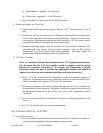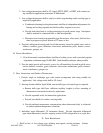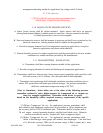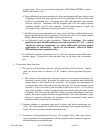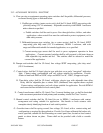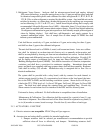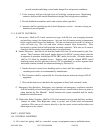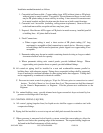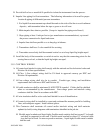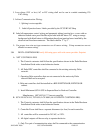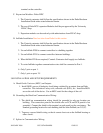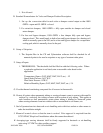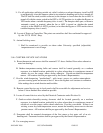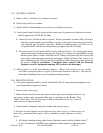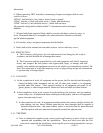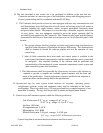JANUARY 2008 UCCS STANDARDS 15950-31
D. Provide ball valves or manifold if specified to isolate the instruments from the process.
E. Impulse Line piping for flow transmitters. The following information to be used for proper
location & piping of differential pressure transmitters.
1. For liquid flow measurement taps should be made to the side of the line to avoid sediment
deposits, with transmitter below the taps so gases or air will vent.
2. Make impulse lines short as possible. (Loops in impulse line piping not allowed.)
3. Slope piping at least 1 inch per foot or (per manufacture recommendations), up toward
the process connection for liquid and steam.
4. Impulse lines shall run parallel so as to keep legs in balance.
5. Transmitters shall have 3-valve manifold for servicing.
6. Transmitter sensor body shall be mounted vertical so as to keep liquid leg heights equal.
G. Install the body of the transmitter or switch in such a way that the connecting points for the
sensing lines are level, so that the liquid-leg heights are equal.
3.03 CONTROL WIRING
A. All control and interlock wiring shall comply with the national and local electrical codes and
Division 16 of these specifications. .
B. All Class 1 (line voltage) wiring shall be UL-listed in approved raceway per NEC and
Division 16 requirements.
C. All low-voltage wiring shall also be in conduit. Conduit type, sizing, and installation
requirements shall conform to NEC and Division 16.
D. All cable conductors shall be minimum 18 AWG TFFN stranded. Cables shall be shielded
when so recommended by the manufacturer. Line-voltage power and interlock wiring
conductors shall be Sized in accordance with NEC.
E. All wire insulation shall be color-coded and labeled for ease of identification.
F. All control wiring shall be installed in a neat and workmanlike manner parallel to building
lines, with adequate support. Install without splices .
G. This Contractor shall terminate all control and/or interlock wiring and shall maintain
updated (as-built) wiring diagrams with terminations identified at the job site.
H. Flexible metal conduits and liquid-tight, flexible metal conduits shall not exceed 3' in length
and shall be supported at each end. Flexible metal conduit less than 1/2" electrical trade
size shall not be used. In areas exposed to moisture, , liquid-tight, flexible metal conduits
shall be used.



